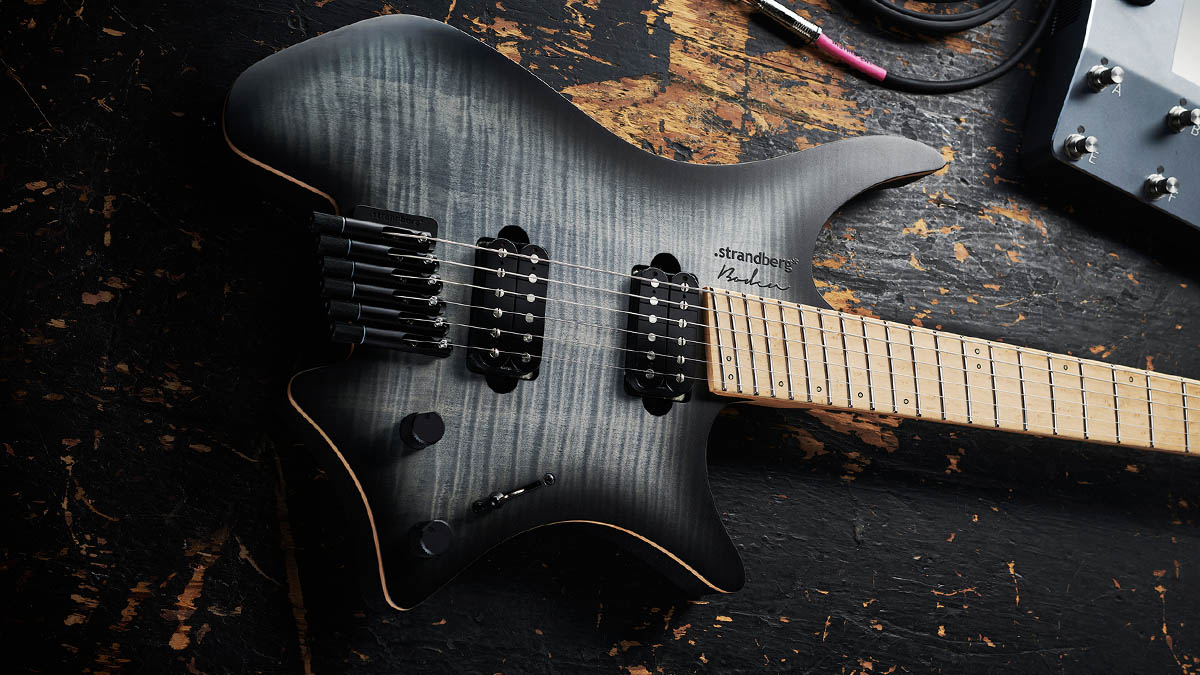Guitar World Verdict
The neck may take some getting used to, but the NX 6's playability is superb and the balance and weight had us wondering why we still lug our big ol’ heavy solidbodies about. The revolution is here.
Pros
- +
Beautifully detailed ergonomic design and crisp build.
- +
Light weight.
- +
Balance.
- +
Superb fretwork and setup.
- +
Immensely versatile yet simple drive.
Cons
- -
Obviously, not everyone will enjoy the headless style or the unusual neck shape.
You can trust Guitar World
While the mainstream guitar industry seems more than content to continue recreating the past, the majority of forward-thinking and genuinely new designs come from what we used to call the underground. Except, of course, thanks to social media, the underground is worldwide and very visible.
Radical, niche guitar designs are just a tap or mouse-click away. Ola Strandberg’s designs might certainly appear out-there, but the new NX level guitars are made in Indonesia by Cor-Tek (one of the largest guitar factories in the world), a reflection of their increasing popularity.
Our first impression of the Boden NX 6 Original is just how well the package is put together. The combination of the headless design and foreshortened body creates what many of us might consider a ‘travel’ guitar – it’s 800mm (31.5 inches) in length from tip to tip, a good 180mm (seven inches) shorter than a Stratocaster.
It’s feather light, too, at just 2.07kg (4.56lb) – but grabbing the neck with your left hand moves it further away from any electric guitar you might ever have played. But we’ll get to that in a short while…
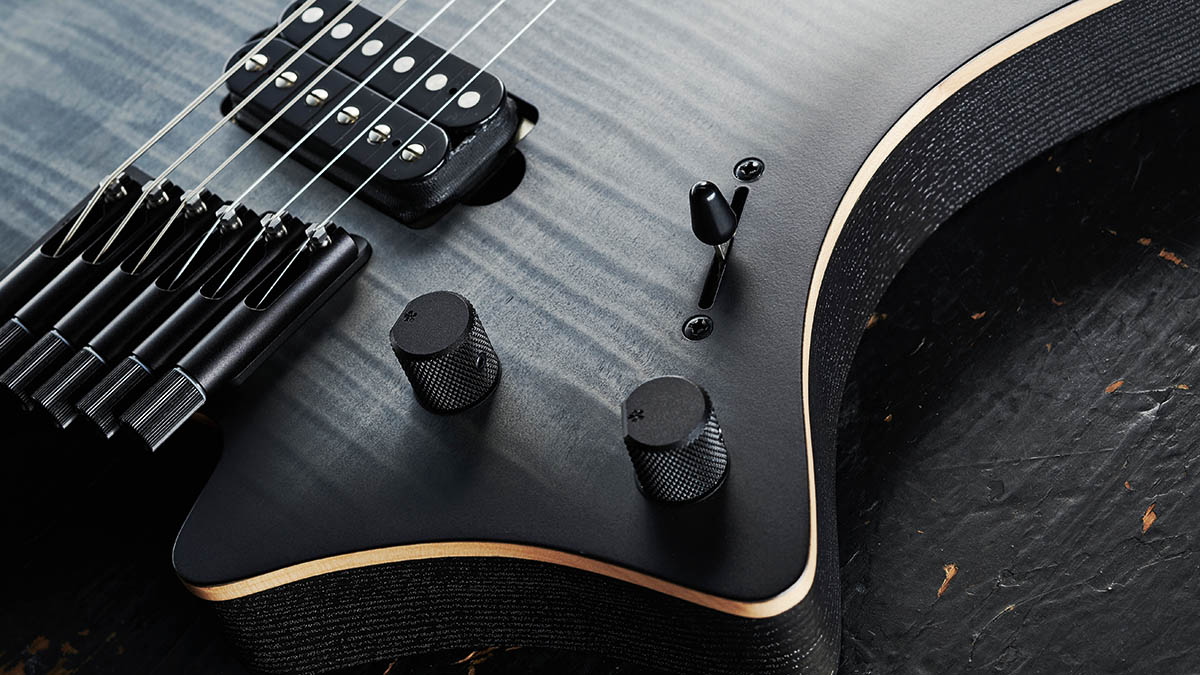
Still, you’ll find some classic references in the materials used. The diminutive body is – on this first production run – made from sassafras, which is actually chambered, presumably not for weight consideration, and topped with a flame maple veneer over a solid maple cap, similar to what PRS uses on its SE guitars, for example, and this shares a similar-style natural edge ‘binding’.
There’s also a forearm curve over that lower bass-side bout next to the bridge and a ribcage cutaway on the back. The finish is a smooth satin to the top, while the sassafras has a very light finish that feels rather textured over the quite ash-like grain (apparently the next production run will actually use swamp ash).
The neck is laminated from three pieces of quarter-sawn maple with two very thin graphite stripes, and is topped with a lightly bird’s eyed maple fingerboard. As you can see, it’s a multi-scale guitar: the scale length of the low E string is Fender-like at 648mm (25.5 inches), the top E is 635mm (25 inches), like a PRS, which accounts for the angled or ‘fanned’ Jescar stainless-steel frets. Both side and face dots are the same-size, black-outlined, glow-in-the-dark Luminlay dots by the look of them.
All the latest guitar news, interviews, lessons, reviews, deals and more, direct to your inbox!
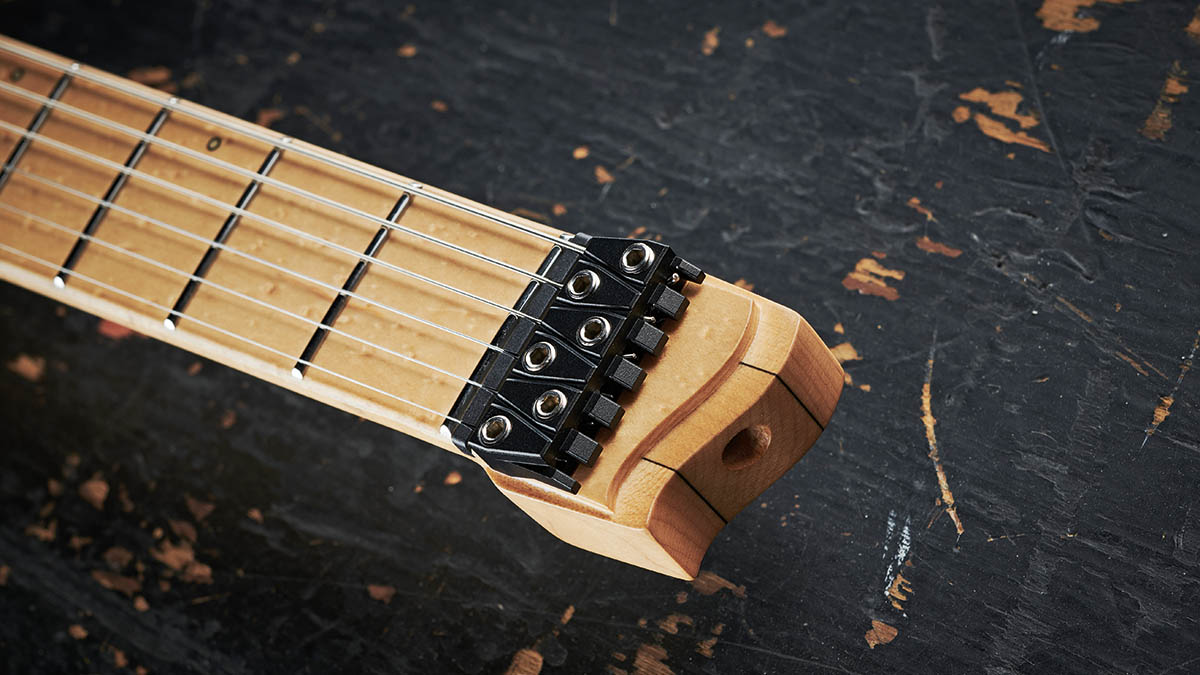
Obviously, a headless design needs its tuners on the body and the design here is very elegant with a precise-feeling tuner knob at the end of each individual-string aircraft-grade aluminium tube.
The actual saddle is a threaded hex nut with a V’d saddle slot that can be screwed up or down to set precise string height, while the whole tube moves and can be locked in place to set accurate intonation. At the nut, well, we have a zero fret that sits in front of a black string guide then a simple thread-through-and-lock assembly.
Oh, and in case you don’t have the correct Allen keys or spanners, .strandberg supplies a very neat NX adjustment tool.
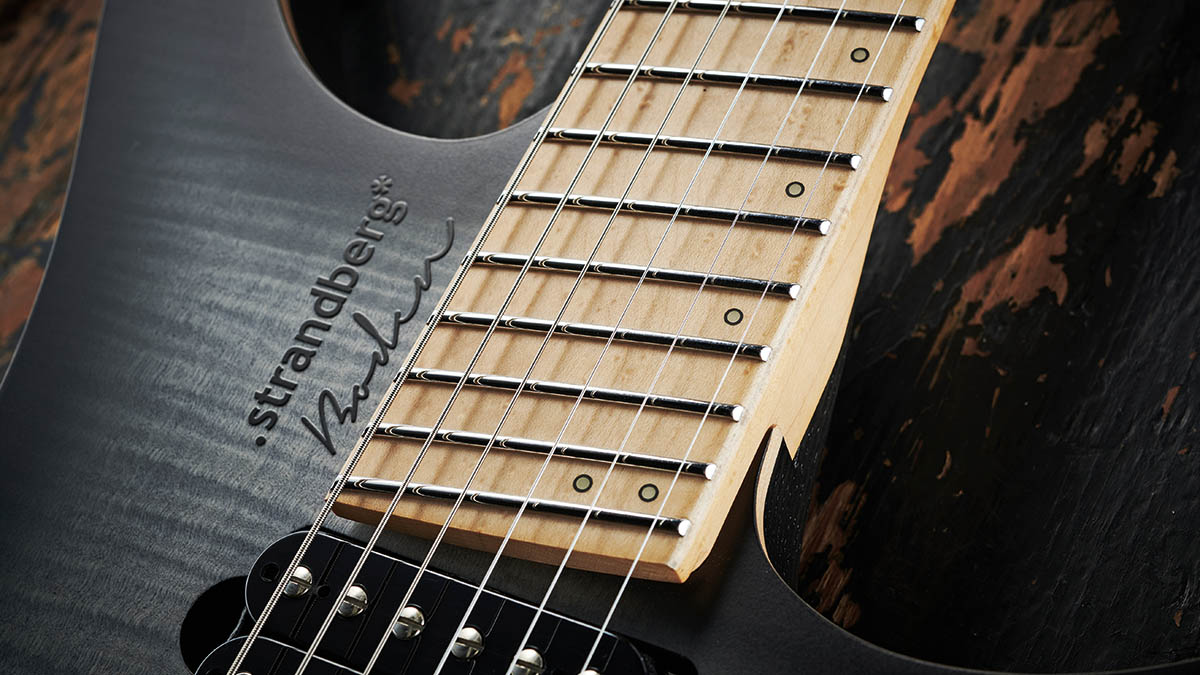
Feel & Sounds
In the many years this writer has commented on electric guitars, it’s fair to say we’ve never encountered a neck quite like this patented EndurNeck. In terms of width – 41.7mm at the nut, a shade under 52mm at the 12th fret – it’s pretty normal.
The depth, however, doesn’t taper, measuring pretty much the same 22.6mm at both the 1st and 12th frets. But it’s the shaping, the profile, that is totally unique in our experience. Imagine a heavily V’d neck whose point is shaved off at the back to create a flat area around 15mm in width.
To make it more complex, that central flat back area moves from being slightly to the treble side under the low frets to the bass side by the 12th fret. This offset, if you like, means the bass side of the V increases in area as you move up the neck and it’s the area (with the guitar strapped on quite high) where your left-hand thumb sits.
As we say, the back and sides are flat planes and only lightly curved where they meet. If you play with your thumb around the neck – as many of us do – this will feel very strange indeed. But with a more studied left-hand position it begins to make sense.
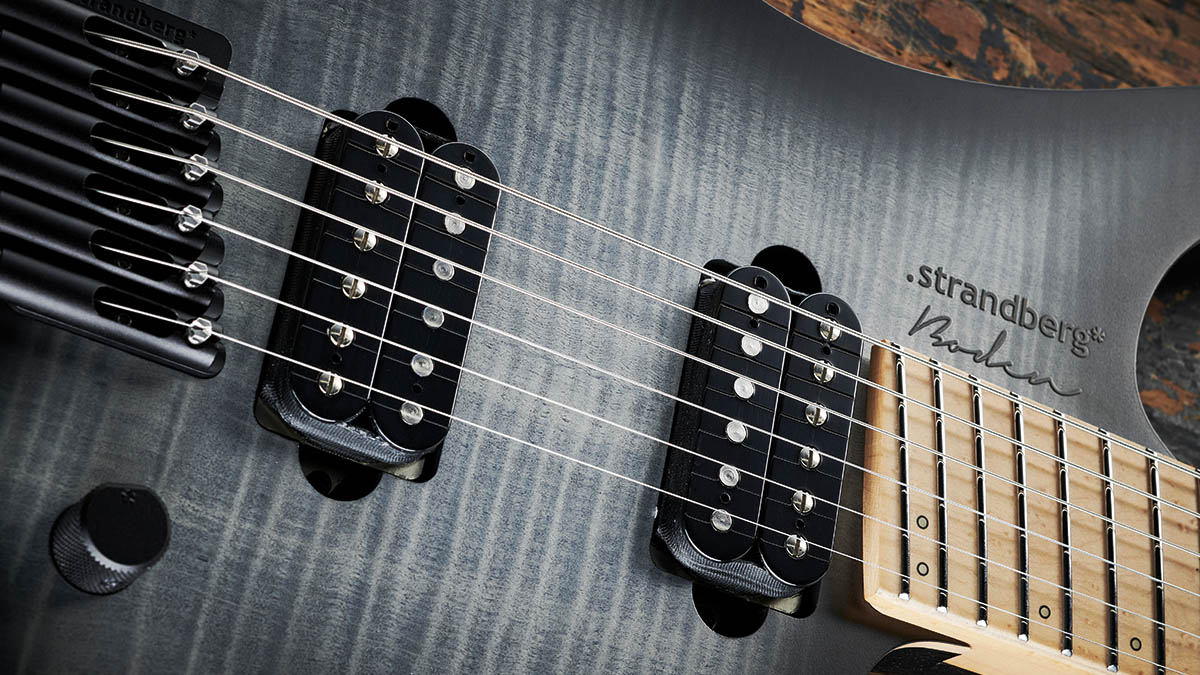
Indeed, strap it high and that strange feel becomes less odd the more you play. Your left hand certainly doesn’t feel strained; you don’t have to pull up the neck because of any imbalance as with an SG, for example. Its light weight means it just hangs in a perfect playing position.
The setup is low (pretty much 1mm on the treble side, 1.2mm on the bass) with barely a fraction of relief, while the fret height, which measures 1.3mm, ensures that bends, hammer-ons and pull-offs are stupidly easy. That said, if you’ve ever played a headless guitar, you’ll know it does take a little adjustment – you can easily fret higher, for example, as your eye just isn’t used to the 1st fret being so close to the tip of the guitar, which is usually the headstock.
The fretwork is superb, the frets feel super smooth, and whatever subtleties the fan fretting brings to the table, after just a little playing you forget they’re even there. Everything is telling you this is modern, progressive and different, but it actually begins to feel incredibly natural very quickly.
But what does it sound like? Well, it’s quite vibrant and lively but with less acoustic volume compared with our PJD Carey Standard – not dissimilar in construction with a lightweight chambered ash body and bolt-on roasted maple neck – which now actually feels quite huge in comparison to the Boden. There’s less apparent low-end but quite a similar crisp treble response.
Plugged in, these differences continue. The Boden is very well voiced. The bridge pickup is girthsome and powerful and quite JB-like, while the neck unit is a little more rootsy sounding, or ‘vintage’ if you like, lower in output with a good clarity.
In between those selections are the single-coil sounds, which provide considerable contrast: a rather good neck tone that really cleans up the full humbucker, and two parallel mixes that don’t disappoint, sitting more in the Strat-like position 2 (bridge and neck), the outside screw coils a tad crisper than the inside slug coils.
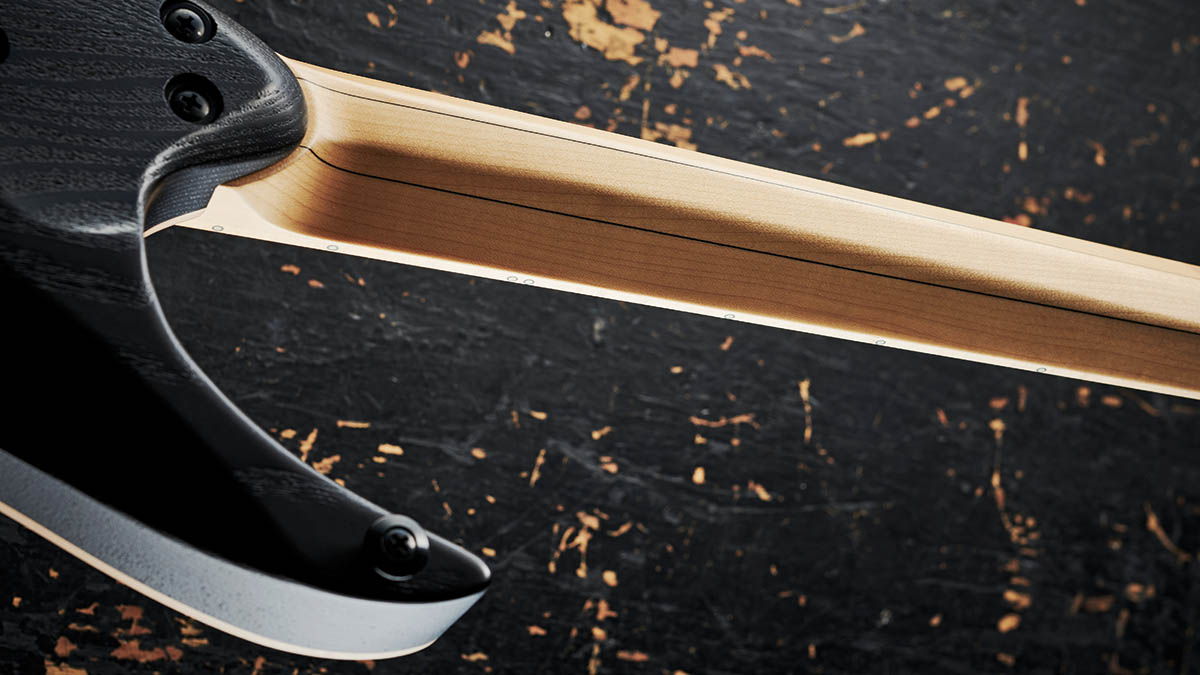
So, while it could be argued that the sounds are the most conventional part of the guitar, they’re well done. The control knobs are very neat and the controls are very smooth in taper. The volume has one of the best treble bleeds we’ve come across. It really gives a very similar sound as you roll it down and there’s just the right amount of tone roll-off to pull back the highs, particularly on those single-coil positions.
While you can heap on the gain and live on the bridge pickup, play the single coils clean with some old- or new-style reverbs and they sound new-age, ethereal. With drier cleans we move from Hendrix-y rhythm texture to super-tight funk. The sound seems almost post-EQ’d with the low-end cleaned up and a touch of compression.
Finally, we head off to band rehearsal and prepare ourselves for some jovial comments from our band members. Swapping from Les Paul to Boden is quite a leap – everything feels different – but it’s the sound we hear that speaks for itself. It’s a fantastic voice that’s slightly cleaner in the low-end but not thin, there’s bags of power on tap and a beautiful juicy resonance that edges into musical feedback when we lean into our cranked amp. We weren’t expecting that. Everyone in the room is seriously impressed.
Verdict
The style and neck shape here will polarise opinion, to put it mildly. But as a musical instrument, this Boden is absolutely superb. It is one of the most stable guitars we’ve ever encountered –we barely touched the tuners during our three-day test window. It has a vibrant resonant voice that sounds huge if you want it to.
There’s also a real acoustic-like resonance here that creates a lively, responsive playing platform and suits a huge range of styles. While the neck shape will take adjustment, we were so absorbed by what we heard that we almost forgot about it.
Specs
- PRICE: $2,295 / £1,664 (inc Venture gigbag)
- ORIGIN: Indonesia
- TYPE: Double-cutaway chambered-body headless electric
- BODY: 2-piece, centre-joined chambered sassafras with flame (or quilted) maple veneered maple top
- NECK: Maple with 5-ply carbon fibre reinforcement, bolt-on
- SCALE LENGTH: 635-648mm (25‑25.5”)
- NUT/WIDTH: EGS Rev7 string lock/41.7mm
- FINGERBOARD: Bird’s eye maple, Luminlay face and side dot markers, 508mm (20”) radius
- FRETS: 24, medium jumbo stainless steel (Jescar)
- HARDWARE: EGS Rev7 fixed bridge/tuning system
- STRING SPACING, BRIDGE: 52mm
- ELECTRICS: Suhr SSH+ (bridge) and SSV (neck) direct-mount open-coiled humbuckers, 5-way lever pickup selector switch, master volume and tone controls
- WEIGHT (kg/lb): 2.07/4.56
- OPTIONS: Available in 7- and 8-string versions, with Fishman Fluence Modern pickups, at £1,728 and £1,800
- RANGE OPTIONS: The Boden NX is also available in Fusion, Prog, Metal and Classic families – see website for details
- LEFT-HANDERS: Not currently
- FINISHES: Charcoal black (as reviewed), Autumn Red – satin body colours with natural satin neck finish
- CONTACT: Strandberg

Dave Burrluck is one of the world’s most experienced guitar journalists, who started writing back in the '80s for International Musician and Recording World, co-founded The Guitar Magazine and has been the Gear Reviews Editor of Guitarist magazine for the past two decades. Along the way, Dave has been the sole author of The PRS Guitar Book and The Player's Guide to Guitar Maintenance as well as contributing to numerous other books on the electric guitar. Dave is an active gigging and recording musician and still finds time to make, repair and mod guitars, not least for Guitarist’s The Mod Squad.
